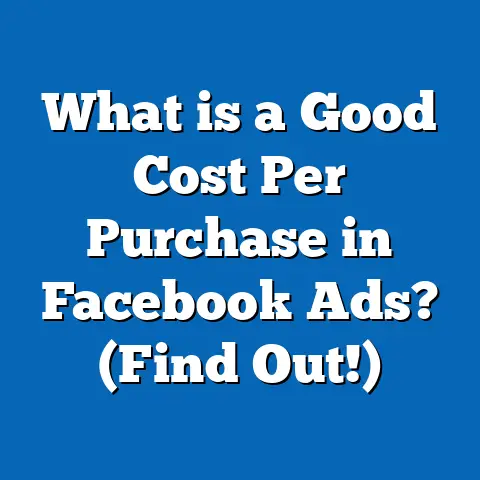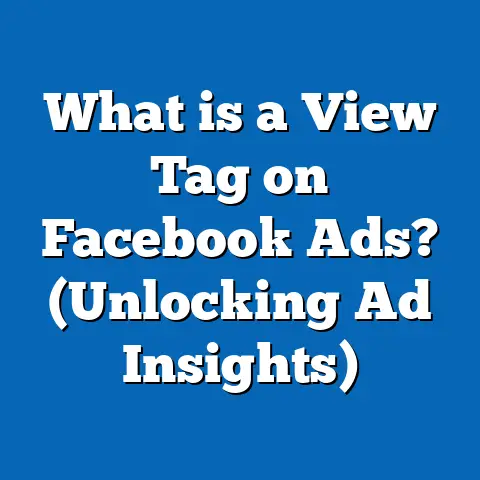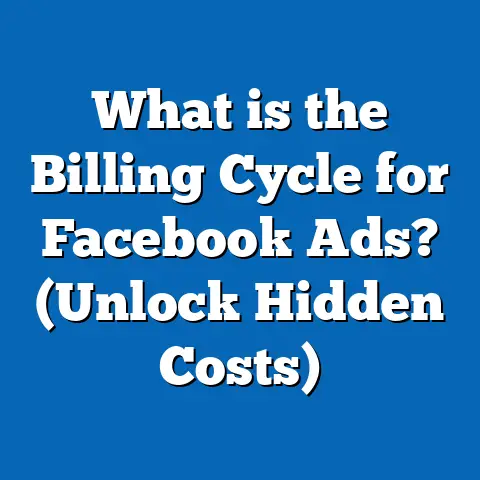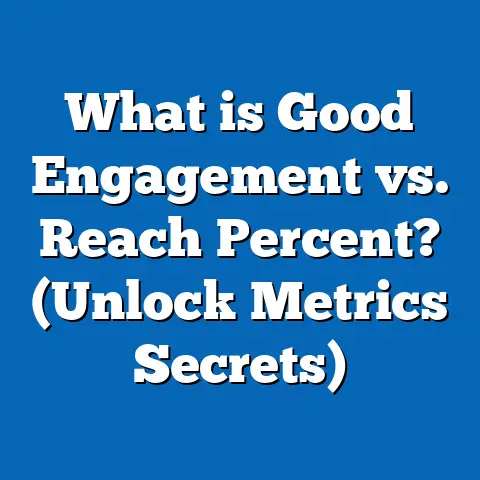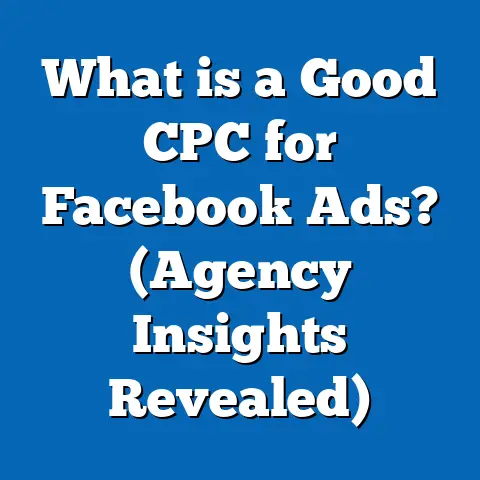What is a News Feed Ad on Facebook? (Uncover Proven Tactics)
What is a News Feed Ad on Facebook? (Uncover Proven Tactics)
Introduction: The Battle for Attention in the Digital Age
In the sprawling digital landscape where over half the world’s population is connected, attention has become the most precious commodity. Every scroll, every tap, every second spent on a screen is a battle for engagement, and nowhere is this fight fiercer than on Facebook. With more than 2.9 billion monthly active users in 2024, Facebook’s News Feed serves as the central hub of social interaction, entertainment, and information for billions globally.
Imagine your brand’s message vying for visibility among thousands of competing posts — from friends’ updates to viral videos — all within a single feed. The question isn’t just about being seen; it’s about making an impact fast enough to stop the thumb mid-scroll. In this high-stakes environment, Facebook News Feed ads have emerged as one of the most effective tools marketers can use to break through the noise. But what exactly are these ads? How do they work? What strategies make them successful? And how can you leverage them to maximize your marketing ROI?
This guide unpacks everything you need to know about Facebook News Feed ads — from fundamental concepts to advanced tactics — supported by data, real-world examples, and research-backed insights. Whether you’re a seasoned marketer or a business owner exploring digital advertising, this resource will equip you with actionable knowledge to harness the full power of Facebook News Feed ads.
Understanding Facebook News Feed Ads
What Exactly is a Facebook News Feed Ad?
A Facebook News Feed ad is an advertisement that appears directly inside the user’s News Feed on Facebook. This feed is the primary content stream users interact with daily — a dynamic mix of posts from friends, family, pages they follow, events, groups, and sponsored content.
Unlike traditional display ads that appear on the sidebar or in less prominent areas, News Feed ads are native advertisements. This means they mimic organic content in style and placement but are clearly marked as “Sponsored.” Because they blend naturally within the user experience, they tend to receive higher engagement compared to other ad types.
Key characteristics:
- Placement: Integrated within the main scrolling feed on both desktop and mobile.
- Formats: Can include single images, videos, carousel posts (multiple images/videos), slideshows, instant experiences (previously Canvas ads), and collection ads.
- Purpose: Designed to drive awareness, engagement, website traffic, conversions, app installs, or lead generation.
Why Are News Feed Ads So Important?
Facebook’s News Feed commands unparalleled user attention:
- The average Facebook user spends about 38 minutes per day on the platform.
- Mobile users constitute over 98% of total active users.
- Over 75% of ad impressions on Facebook occur within the mobile News Feed.
- Ads here benefit from “native” presentation — appearing as part of natural content consumption.
Performance metrics confirm their value:
- According to WordStream data (2024), Facebook News Feed ads have an average CTR of 0.9%—double that of right-column ads.
- Mobile News Feed ads yield 30%-40% more engagement than desktop placements.
- Advertisers report ROAS (Return on Ad Spend) increases between 20% and 60% when focusing campaigns on News Feed placements.
These factors make News Feed ads the frontline for brand storytelling and conversions on Facebook.
The Mechanics Behind Facebook News Feed Ads
How Facebook Determines Which Ads Appear
Facebook operates one of the most advanced ad auction systems globally. Every time there is an ad space available in a user’s feed, thousands of advertisers compete based on:
- Bid Amount: The maximum an advertiser is willing to pay per click/action.
- Estimated Action Rates: Facebook predicts how likely users are to interact with the ad based on historical data.
- Ad Quality and Relevance Score: Gauged by user feedback (positive or negative), engagement rates, and relevance to the audience.
The winning ad is chosen not necessarily by highest bid but by which ad provides the best overall value to the user and advertiser combined — ensuring a positive experience.
Types of Facebook News Feed Ads Explained
Facebook offers multiple ad formats within the News Feed to cater to diverse marketing objectives:
- Single Image Ads:
- Simple and effective for clear messaging.
- Best for brand awareness or direct response campaigns.
- Recommended image size: 1200 x 628 pixels.
- Video Ads:
- Video content captures attention faster and holds it longer.
- Short videos (under 15 seconds) perform best.
- Ideal for storytelling and product demos.
- Carousel Ads:
- Multiple images or videos users swipe through.
- Great for showcasing product ranges or multi-feature offers.
- Can include up to 10 cards per ad.
- Slideshow Ads:
- Lightweight video-like ads created from still images.
- Perfect for reaching audiences with slower internet connections.
- Instant Experience (IX) Ads:
- Full-screen interactive ad format that loads instantly on mobile devices.
- Combines images, video, carousels, and CTAs in one immersive experience.
- Collection Ads:
- Feature a cover image/video plus several product images beneath.
- Designed primarily for e-commerce businesses to facilitate product discovery.
Proven Tactics for Maximizing Facebook News Feed Ad Performance
1. Targeting with Laser Precision
Facebook’s targeting capabilities are among the most advanced in digital marketing. Pinpointing your audience ensures your message reaches those most likely to convert.
Core Audiences:
Utilize demographic data such as age, gender, location, language, interests (pages liked or activities), behaviors (purchase behavior, device usage), and connections.
Custom Audiences:
- Retarget people who have interacted with your business.
- Upload customer email lists or phone numbers.
- Retarget website visitors via Facebook Pixel.
Lookalike Audiences:
Generate audiences similar to your best customers by analyzing shared traits and behaviors.
Insight: Advertisers who use Lookalike Audiences report a 25% higher conversion rate compared to broad targeting.
2. Crafting Creatives That Capture Attention
In the crowded News Feed space, visual appeal and messaging clarity are essential.
- Use high-quality images or videos optimized for mobile screens.
- Focus on storytelling that resonates emotionally or solves problems.
- Keep text short; Facebook suggests fewer than 125 characters for optimal engagement.
- Incorporate strong CTAs like “Shop Now,” “Learn More,” or “Sign Up.”
- Use contrasting colors and avoid too much text overlay (Facebook limits text coverage to 20%).
Practical Example: A beauty brand increased engagement by 50% after switching from static images to short tutorial videos featuring real users.
3. Using Social Proof Effectively
Social proof builds trust in an ad’s message:
- Highlight customer reviews or testimonials in video or image formats.
- Encourage comments and shares by asking questions or running polls within ads.
- Show engagement metrics like likes and shares when possible.
Stat: Ads with social proof generate up to 70% higher conversion rates according to HubSpot research.
4. Continuous Testing and Optimization
No campaign should run without testing variations.
- A/B test headlines, creative formats, audience segments, and CTAs.
- Use Facebook’s split testing tool for controlled experiments.
- Monitor KPIs such as CTR, CPC (Cost Per Click), CPA (Cost Per Acquisition), and ROAS.
Data Point: Weekly ad testing can improve campaign performance by up to 20%.
Deep Dive: Real-World Case Studies
Case Study 1: E-Commerce Brand Boosts Sales by 60% Using Carousel Ads
An online fashion retailer targeted females aged 18–35 with carousel ads showcasing outfits styled for different occasions. They utilized Lookalike Audiences alongside retargeting website visitors who abandoned shopping carts.
Results:
- Sales increased by 60% within three months
- Cost per acquisition dropped by 15%
- CTR improved from 1.2% to 3.5%
Tactic Breakdown:
- Multiple product images highlighted variety.
- Retargeting focused on warm leads ready to buy.
- Clear “Shop Now” CTA encouraged immediate action.
Case Study 2: SaaS Company Generates 3x More Leads With Video Ads
A SaaS firm targeting small business owners launched video ads explaining key product benefits in under 15 seconds using simple animations and real customer voiceovers.
Outcomes:
- Lead volume tripled in six weeks
- CPL decreased by 35%
- Engagement rates rose by over 50%
Why It Worked:
- Video format increased trust and comprehension.
- Targeting was tightly aligned with business owner demographics and interests.
- Follow-up retargeting nurtured leads through email sequences.
Comparing Facebook News Feed Ads with Other Platforms
| Feature | Facebook News Feed Ads | Instagram Feed Ads | LinkedIn Sponsored Content |
|---|---|---|---|
| User Base | 2.9 Billion+ | Over 2 Billion | 900 Million+ |
| Primary Audience | Broad demographics | Younger audience (18–34 mainly) | Mainly B2B professionals |
| Engagement Rate | High | Very high (especially Stories) | Moderate |
| Ad Formats | Multiple (video, carousel) | Similar to Facebook | Mostly text & image/video |
| Cost Per Click (CPC) | $0.50–$2.00 | Slightly higher than Facebook | Higher ($3–$7) |
| Best For | Mass market & diverse goals | Visual branding & younger demo | B2B lead gen & thought leadership |
Facebook’s scale combined with targeting depth makes its News Feed ads versatile across industries compared to more niche platforms.
Advanced Strategies for Experienced Advertisers
Dynamic Ads: Personalized Product Recommendations at Scale
Dynamic ads automatically show products tailored to user behavior — such as items viewed or added to cart but not purchased.
Benefits include:
- Higher relevance improves CTR and conversion rates.
- Scalable for large catalogs without creating individual ads per product.
Stat: Businesses using Dynamic Ads report a 70% increase in ROAS on retargeting campaigns.
Using Facebook Pixel for Deep Conversion Tracking
Installing the Facebook Pixel on your website lets you track user behavior beyond clicks—such as purchases, sign-ups, or time spent on key pages.
Advantages:
- Build detailed custom audiences for retargeting.
- Optimize campaigns toward high-value actions using conversion tracking.
- Measure offline conversions when linked with CRM systems.
Combining Organic Content with Paid Promotion
Boosting organic posts via paid News Feed ads allows brands to:
- Extend reach without losing authenticity.
- Test content performance before investing heavily in paid campaigns.
- Encourage social sharing which amplifies organic growth further.
Latest Trends in Facebook News Feed Advertising (2024 Update)
AI-Powered Creative Tools
Facebook now offers advertisers AI-driven tools that suggest headline variations, image styles, and audience segments based on campaign goals and past performance data.
Privacy Changes Impacting Targeting
Due to evolving privacy regulations (GDPR, CCPA) and platform restrictions like iOS privacy updates:
- Advertisers must adapt targeting strategies with less granular data.
- Increased focus on first-party data collection via Custom Audiences is critical.
Short Video Domination
Short-form videos resembling TikTok-style content are gaining prominence in feeds due to high engagement rates — pushing advertisers toward quick, punchy creative formats.
Augmented Reality (AR) Experiences
AR ads allow interactive try-ons or immersive brand experiences directly inside the feed—boosting engagement beyond static visuals or traditional videos.
Practical Steps to Launch Your First Facebook News Feed Ad Campaign
- Set Clear Objectives: Awareness? Website traffic? Lead generation? Conversion?
- Define Your Audience: Use demographics + interests + behaviors + Custom/Lookalike Audiences.
- Choose Ad Format: Single image, video, carousel depending on what suits your message best.
- Create Engaging Creative: High-res visuals/videos + compelling copy + strong CTA.
- Set Budget & Schedule: Decide daily/lifetime budget; schedule ads during peak hours.
- Install Facebook Pixel: Essential for conversion tracking & retargeting.
- Launch Campaign & Monitor Results: Track CTR, CPC, CPA; adjust as needed.
- Test Regularly: Run A/B tests on creative elements + audience segments for continuous improvement.
Common Mistakes to Avoid in News Feed Advertising
- Overloading images with text — keeps value low due to Facebook’s text rule.
- Targeting too broadly without segmentation — wastes budget on uninterested users.
- Ignoring mobile optimization — over 98% of users access via mobile devices.
- Neglecting retargeting — misses opportunity to convert warm leads.
- Running campaigns without proper pixel tracking — limits insight into effectiveness.
Bonus: Sample Ad Copy Examples for Different Goals
Brand Awareness
“Discover our newest collection — designed for comfort & style! Shop now & enjoy free shipping.”
Lead Generation
“Want expert tips? Download our free marketing guide today — no strings attached!”
E-commerce Conversion (Carousel)
Card 1: New arrivals
Card 2: Best sellers
Card 3: Flash sale — up to 50% off!
CTA: Shop Now
App Install
“Ready to boost productivity? Download [App Name] today & get started with a free trial!”
Key Takeaways and Next Steps
Facebook News Feed ads remain one of the most potent tools in digital marketing due to their massive reach, native placement, and advanced targeting capabilities. To succeed:
- Understand your audience deeply using Facebook’s targeting tools.
- Invest in quality creatives optimized for mobile feeds.
- Use social proof and storytelling to build trust and engagement.
- Constantly test ad variations and optimize based on data insights.
- Leverage advanced features like Dynamic Ads and Pixel tracking for precision marketing.
- Stay informed about platform changes and new ad formats.
If you’re ready to dive further into specific campaign setups or need customized strategies based on your industry or budget size, I’m here to help build tailored solutions that deliver measurable results.
If you want me to extend any section further—for example detailed setup walkthroughs, more case studies in specific industries, or step-by-step optimization checklists—just let me know!

